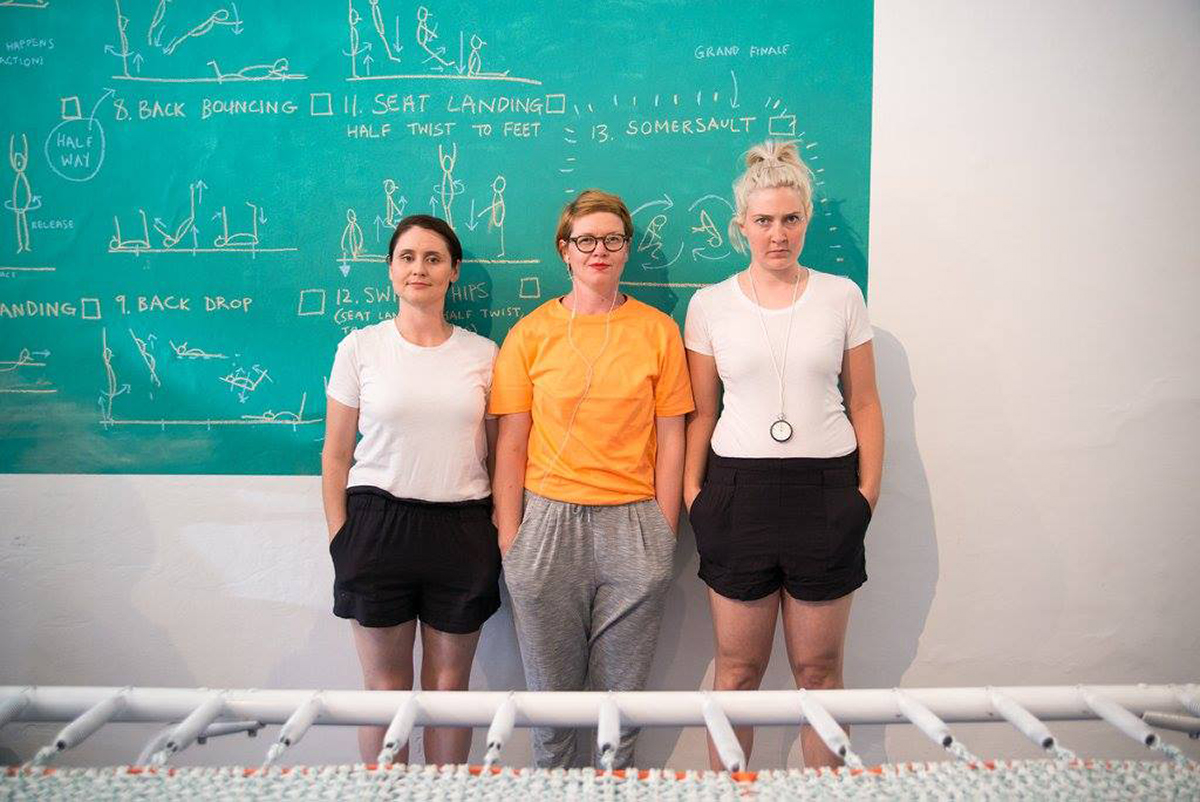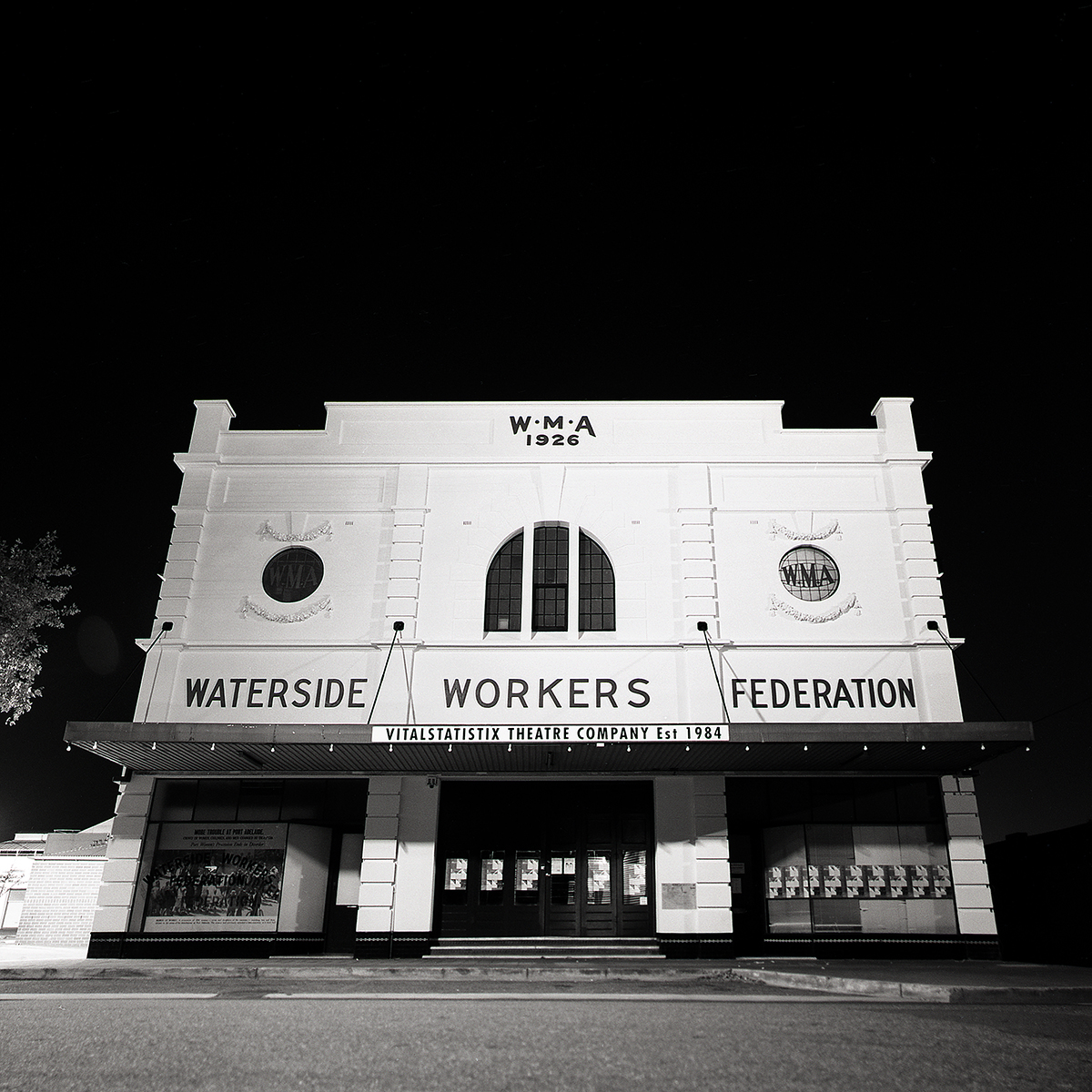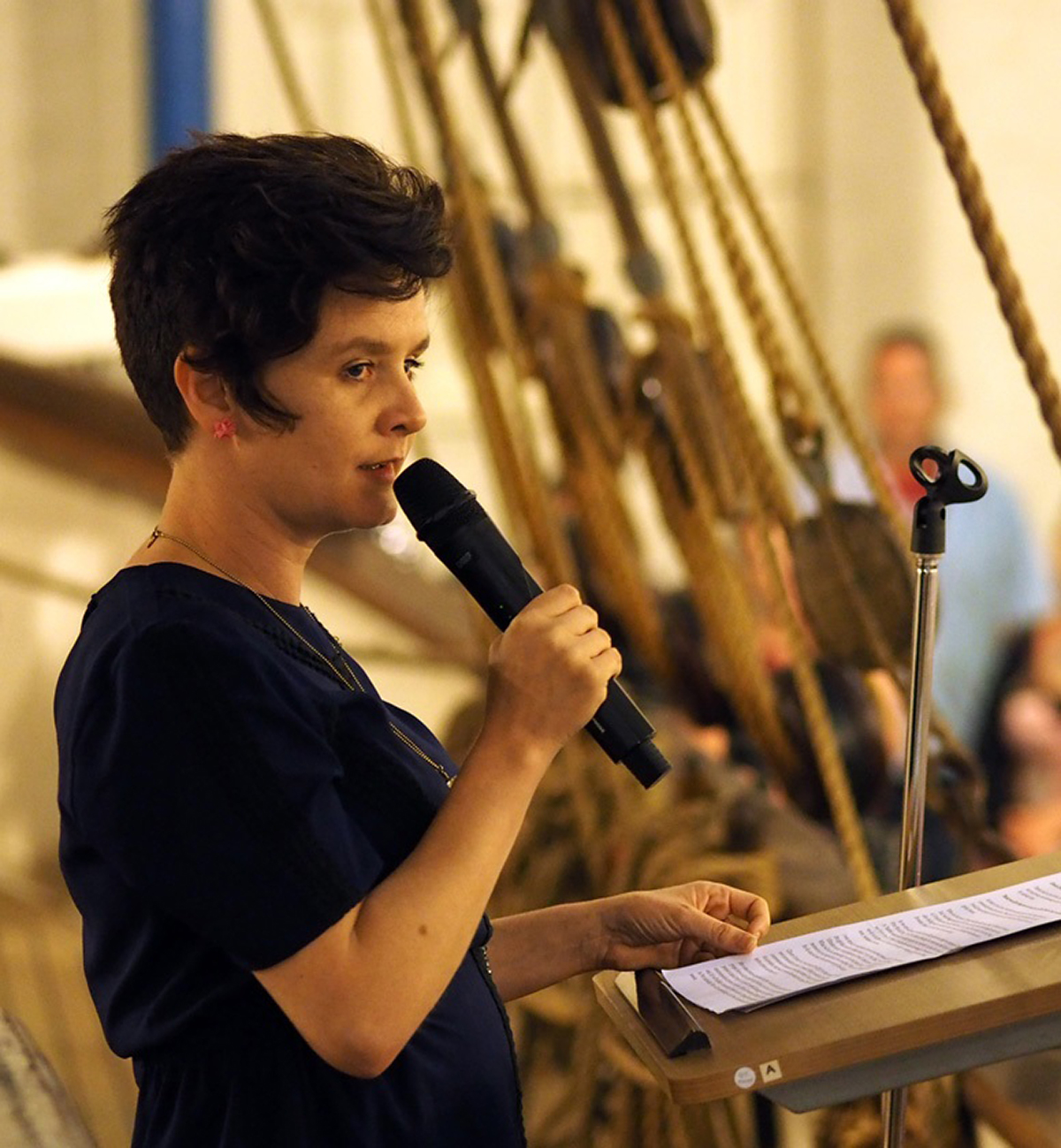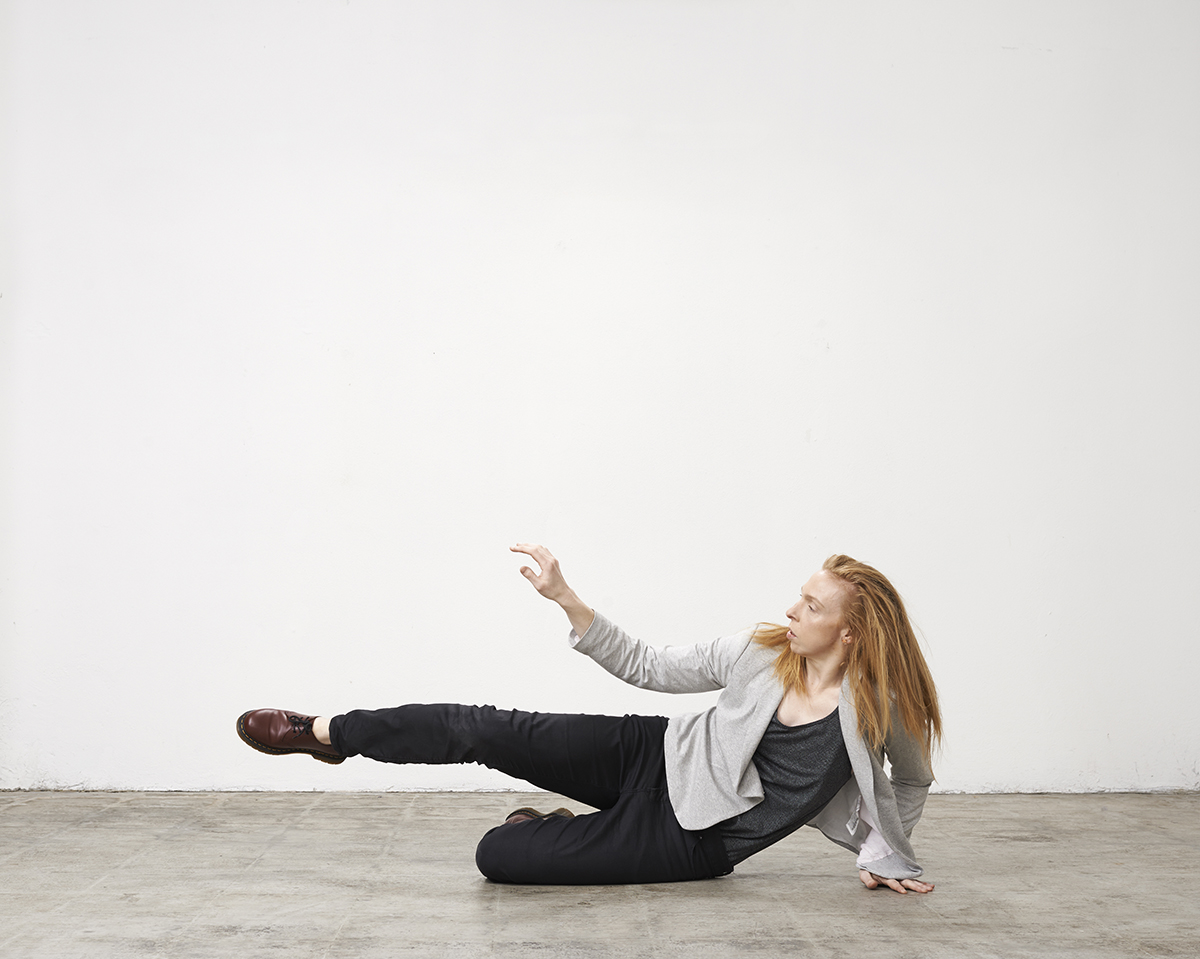
Performance nurturers 2: Vitalstatistix
Half an hour’s drive northwest of Adelaide’s CBD, flanked by the Birkenhead Bridge on one side and the recently refurbished Hart’s Mill precinct on the other, is the heritage-listed Waterside Workers Hall in Port Adelaide. Since 1984 the Hall has been home to the contemporary arts organisation Vitalstatistix and its expansive, markedly queer and feminist programs of interdisciplinary performances and developments. It’s often joked, sadly not without foundation, that Port Adelaide is too far for metropolitan-minded Adelaideans to travel. It’s also true that the weather can be bitter as the area’s many alleyways channel the icy Port River winds, especially during the middle months of the year.
And yet Vitals, as it’s usually referred to by locals, is a unique place, neither regional nor exactly urban, a site both for intensely private experimentation and the generous laying bare of artistic process. All the while it feels socially embedded, part of the fabric of the community, in a way that few arts organisations do. When I think of the company I picture happily shivering through the three public days of its annual national hothouse Adhocracy, traditionally held over the June long weekend but lately shifted to early September. In a way, the image seems resonant in its stoicism; Vitals was defunded in the 2014–15 Federal Budgets, determinedly reshaping its 2017 program around an interim, one-year funding agreement struck with the State Government. Perhaps, too, there is something fitting in Adhocracy’s move to the first weekend of Spring, traditionally a time of rebirth and renewal.
In what are lean times for independent artists, Vitalstatistix continues to heavily invest in individual practice — not a funding priority in the 2014–15 Federal Budgets — on both project- and career-focused bases. Its program this year is a rich one: an expanded residency series, six new commissions through the Climate Century project and, in addition to Adhocracy, now in its eighth year, a multiplicity of exhibitions and work-in-progress showings through partnerships with around half a dozen organisations including the Tarnanthi Festival of Contemporary Aboriginal and Torres Strait Islander Art, which will co-present Brad Harkin’s exhibition of visual art and sound work, LOSS. GAIN. REVERB. DELAY. at Waterside in October and November.

Waterside Workers Federation Hall, home of Vitalstatistix
In the aftermath
I began by asking Webb how the loss of operational Australia Council funding — also the fate of four other South Australian arts organisations, Brink, Slingsby, the Contemporary Arts Centre of South Australia (CACSA) and the Australian Experimental Arts Foundation (AEAF), totalling $1.8 million in cuts — affected this year’s program. “The impact of the cut was twofold,” Webb says. “Obviously it had an immediate financial impact but it also has a long-term effect — just as impactful in some ways — around stability and planning and not knowing what resources are ahead. The interim funding agreement enabled us to have a full program this year and we had to think about how best to use those extra resources. And so the combination of that opportunity and the funding cuts, and that question of being able to plan forward, led us to decide that the best use of our resources in all of that context was to seed a whole lot of new projects and development. By the time we select the Adhocracy projects” — this year there will be between seven and nine, plus the residency project Second Hand Emotions — “and finalise the Climate Century program we’re looking at close to 30 projects under development, many of which we hope to present in our programs in future years.”
The art itself
She continues: “Our work has always been artist-focused but this year particularly so while still having substantial public engagement through all the different showings and labs and public talks. When you’re not spending your money on box office risk or all of the marketing you need to do when you’re presenting ticketed shows, you’re able to really just focus on the art itself. We’ve been saying it’s kind of like Adhocracy but expanded throughout the year, and we feel like that’s a unique offer that we’ve been making artists and audiences for some time — to come into the process of experimentation and see how art is made while at the same time artists are receiving feedback from peers as well as the general public.
“This year’s program feels a little bit ‘Festival of Ideas’ as well, because all of these projects we’re commissioning and presenting as works in progress are engaging with a whole lot of important themes and ideas and conversations. So we’re thinking about it as a public dialogue.” One vivid illustration of this is Climate Century, a five-year project begun in 2014 that invites artists to respond to the question of how we, and future generations, will come to understand the climate change tipping points we are currently living through. In development this year, in 2018 the project will culminate in the presentation of six commissioned works, including one regional work produced in partnership with Country Arts SA.
In the Incubator
This year, Vitals’ long-running program of two-week residencies, called Incubator, has been expanded from two projects to three, while a second stream has been added that will see two groups of artists in residence throughout the year. In May there were work-in-progress showings of regional SA theatre-maker and writer Rebecca Meston’s Drive, an intriguing choreographic response (with Adelaide choreographer Larissa McGowan) to a 2007 true crime case in which a female NASA astronaut attacked her partner’s younger lover. In residency this month are Melbourne performance makers Nicola Gunn and Tamara Saulwick who are developing Super Imposition, a fusion of performance, music composition, and video art that is also being supported by Melbourne’s Chamber Made Opera. Finally, in July, musician and composer Cat Hope (ex-Perth and now Melbourne-based) will present showings of an experimental opera, Speechless, produced by Perth’s Tura New Music and inspired by Gillian Triggs’ 2014 Human Rights Commission report on children in immigration detention.
Two additional year-long residencies present a different model of development, one that is not simply about making work. One will see “conversationalist” Emma Beech (SA) installed in the Shopfront Studio at the Waterside Hall where, as well as rethinking her own practice as a theatre-maker, she will act as a sort of ambassador for Vitalstatistix by engaging directly with the Port Adelaide community. The other, called Points in the Plane, will provide three emerging local multidisciplinary artists, Josie Ware, Ashton Malcolm and Meg Wilson, with a mentorship facilitated by Webb that will explore the nature of their collaboration, which began at Adhocracy in 2014.

Emma Webb, Climate Century 2015, photo Tony Kearney
A choice selection
And what criteria, I ask Webb, are employed by Vitals to select the artists the company chooses to work with? “One of the things that we try to do,” Webb explains, “is to work with both emerging and mid-career or established artists. We certainly work more with artists who are well into their career — I don’t feel we’re an emerging artist organisation per se — however, a good example is Adhocracy, where we always try to make sure we select projects by emerging as well as established artists because we find that combination is great for the dynamic kinds of conversations and processes that happen there. I would also say we are certainly interested in projects that have an engagement with the world and with I guess what you could say are progressive ideas. We’ve been doing a lot of work recently around climate change, and historically there’s a feminist and queer eye across a lot of how we think about the organisation and its programming. In the last little while we’ve also supported a lot of work that is to do with economics: the economics of art-making, ideas of resilience, the economic crisis, and so on.”
“We’ve also in recent years,” Webb tells me, “had quite a lot of engagement with dance, which is interesting because we’re not a dance organisation but have just found those kind of expanded dance practices to be really interesting at the moment. I love dance so I think that’s something that’s been noticeable about our program in the last couple of years. The other thing we look for is what the collaborative process within a group is like, who’s proposing to work with who, and why. Take, for instance, Nicola Gunn and Tamara Saulwick’s Incubator residency. We’ve worked with Nicola a lot and I’m a big fan of both those women’s work and this is their first collaborative project, which is exciting for us apart from anything else. So we definitely look for artists who are proposing something new.”
The cash
Webb elaborates: “All of our opportunities come with a cash contribution and artist fees attached as well as quite significant in-kind support, whether it’s through the physical residency at Vitals or working with our staff. I try to spend lots of time with the artists. Also small organisations like Vitals can offer a different kind of place to make work that puts you in a unique context and environment and politic. We feel like artists really appreciate the time and space they get in Port Adelaide and at Waterside. I think also one of the things we’re adept at is finding partnerships — I think pretty much anything we’re doing at the moment is in partnership with other organisations. It’s a really great way to maximise resources and give artists the biggest kinds of opportunities and platforms possible.”

Jo Lloyd, Speech Pattern, co-creator and photo Davis Rosetzky
At work with PADA
One key partnership is with PADA (Performance & Art Development Agency), founded by Webb and Steve Mayhew in 2015 as, in Webb’s words, “a small, city-based, project-based, curatorial project.” It grew out of discussions between the two around curatorial diversity in South Australia, and whether the time was right for a new contemporary arts organisation. They decided it was, and then everything changed — Brandis, the 2015 budget, and all the rest. In 2015 PADA presented its first public project, the exhibition Near and Far [read the RealTime review], at the Queen’s Theatre in Adelaide. “In 2014,” Webb explains, “there was nationally much more a feeling of confidence in the sense that there was going to be an opening up of opportunities, potentially through the Australia Council, but obviously all of that changed. We decided that for this year we would umbrella the projects we had commissioned during the cuts under our respective organisations, Vitals and, in Steve’s case, Country Arts SA. It seemed the smartest way to deal with resources and time if we were going to make sure those artists were able to be supported and carry their works through to the next stage of development.”
Work-in-progress showings of two of these works — Larissa McGowan’s Cher and Melbourne media artist David Rosetzky and choreographer Jo Lloyd’s Speech Pattern — were featured last month in Physical Forces, a program of dance works presented by PADA, Vitals and ACE Open, the new contemporary arts organisation merged from the remains of CACSA and the AEAF. Also under co-development with Vitals and PADA are Rebecca Conroy’s Iron Lady (NSW) and two works by artists with extensive experience in Europe, Daniel Jenatsch’s Enheduanna and Adelaide-born Chris Scherer’s Duncan. The latter was presented as part of the Art Gallery of South Australia’s Versus Rodin exhibition in April. Reflecting on the collaboration, Webb says, “Curator of Contemporary Art Leigh Robb was incredibly generous with Chris, and it’s started conversations between us around what performance art in a gallery looks like.”
Solidarity
Thinking about these kinds of work and Port Adelaide, with its post-industrial, gentrifying but for the moment still ragged air, does suddenly seem distant, half a world away from the Art Gallery’s crisp white walls. And yet it strikes me too that one of the few good things to have come out of the funding crisis has been a refreshed sense of industry solidarity, of people and organisations reaching out across artistic divides — perhaps not as wide as we had first thought — in ways that have not, or only fitfully, happened before. Just before I sat down with Webb I noted that a work developed at Adhocracy in 2015, Applespiel’s Jarrod Duffy is Not Dead (NSW), had gone on to a full presentation [read the RealTime review] at Brisbane’s Metro Arts in April. It must be pleasing, I suggest to Webb, when such projects bear fruit. “It’s incredibly satisfying,” she says, “to see these seeds blowing into all kinds of places.”
–
Vitalstatistix: Incubator residency work-in-progress showings, Nicola Gunn and Tamara Saulwick, Super Imposition, Waterside, Port Adelaide, 30 June-1 July; Cat Hope, Speechless, Waterside, Port Adelaide, 28-29 July; Adhocracy, Waterside, Port Adelaide, 1-3 Sept; Vitalstatistix and PADA, Daniel Jenatsch, Enheduanna, Nexus Arts, Adelaide, 27-28 Oct; Rebecca Conroy, Iron Lady, venue TBC, 13-26 Nov; Vitalstatistix and Tarnanthi, Brad Harkin, LOSS. GAIN. REVERB. DELAY., Waterside, Port Adelaide, 18 Oct-5 Nov
Top image credit: Josephine Were, Meg Wilson, Ashton Malcolm, Points in the Plane, photo courtesy the artists and Vitalstatistix






